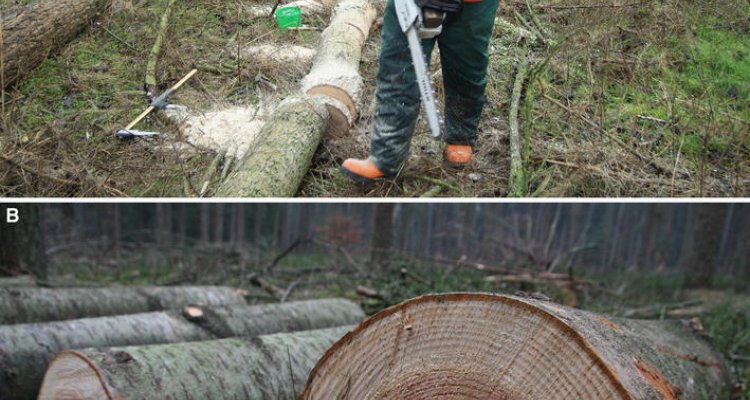
Project
Beyond leaf economics: Integrating root, leaf and stem traits to examine resource acquisition and tree growth
Improving tree growth is important to meet timber and biomass demands, and driven by leaf, stem and root properties that determine the acquisition and loss of resources.
The impact of leaf traits on growth is well-established, but root traits are still understudied, although they determine the uptake of essential resources, and are linked with stem and leaf traits. Because of these links, integrating root, leaf and stem traits seems the key to understand tree growth.
Improving tree growth and forest productivity is important to meet timber and biomass demands, and mitigate climate change. This study assesses how growth is driven by leaf, stem and root properties that determine the acquisition and loss of resources, and by environmental variables. The impact of leaf traits on growth has been widely studied, and a worldwide leaf economics spectrum suggests that leaf traits are correlated in syndromes tightly associated with growth. To date, root traits and their dynamics have received far less attention in functional trait studies, although they take up resources essential to growth, and are linked with stem and leaf traits. Due to these functional links between roots, stem and leaves, integrating their traits and dynamics could well be the key to assess and understand tree growth, rather than from leaf properties alone.
During this PhD project, I aim to examine and understand tree growth from the integrated impacts of root, stem and leaf traits on growth along a soil resource gradient, with specific focus on the understudied root traits and their plasticity. The influence of the (soil) environment on traits, and consequently tree growth, is accounted for in this project, especially because the plasticity in root dynamics has never been studied on dominant trees.
In line with this objective, we selected two study sites in the Netherlands on a wet, nutrient-rich and a dry, nutrient-poor soil. On both sites, we will measure and analyze traits and dynamics of dominant trees of a variety of species, and correlate these data across plant parts to test if and how leaf, stem and root traits are linked across species and across sites. Next, we will integrate these trait data in a whole-plant growth model, to assess and predict growth from traits, underlying physiological principles and variation in soil conditions. Ultimately, this will reveal whether and how traits are functionally coupled and how these relationships determine growth in general, and specifically for a variety of common NW European tree species and field conditions.
MSc thesis topics
- Leaf and root trait effects on stem growth sensitivity to summer drought of 10 temperate tree species - Natasa Kiorapostolou (2015)
- Nutrient balances of two contrasting Dutch soils and the effect of harvesting on soil nutrient availability - Carlette Nieland (2015)
- Morphological and physiological leaf and shoot trait analysis of European beech populations with contrasting water availability - Lisanne van Willegen (2015)
Publications
-
Belowground uptake strategies: how fine-root traits determine tree growth
Wageningen University. Promotor(en): Frits Mohren, Liesje Mommer, co-promotor(en): Frank Sterck - Wageningen: Wageningen University - ISBN: 9789463430395 -
Bodem stuurt groei van boomwortels
-
Fine-root trait plasticity of beech (Fagus sylvatica) and spruce (Picea abies) forests on two contrasting soils
Plant and Soil (2017), Volume: 415, Issue: 1-2 - ISSN 0032-079X - p. 175-188. -
Towards a multidimensional root trait framework: a tree root review
New Phytologist (2016), Volume: 211, Issue: 4 - ISSN 0028-646X - p. 1159-1169. -
Functional ratios among leaf, xylem and phloem areas in branches change with shade tolerance, but not with local light conditions, across temperate tree species
New Phytologist (2016), Volume: 209, Issue: 4 - ISSN 0028-646X - p. 1566-1575. -
Summer droughts limit tree growth across 10 temperate species on a productive forest site
Forest Ecology and Management (2013), Volume: 306 - ISSN 0378-1127 - p. 142-149. -
The role of roots in the resource economics spectrum
New Phytologist (2012), Volume: 195, Issue: 4 - ISSN 0028-646X - p. 725-727. -
Plasticity influencing the light compensation point offsets the specialization for light niches across shrub species in a tropical forest understorey
Journal of Ecology (2013), Volume: 101, Issue: 4 - ISSN 0022-0477 - p. 971-980. -
Controls on coarse wood decay in temperate tree species: birth of the LOGLIFE experiment
Ambio (2012), Volume: 41, Issue: Suppl. 3 - ISSN 0044-7447 - p. 231-245.